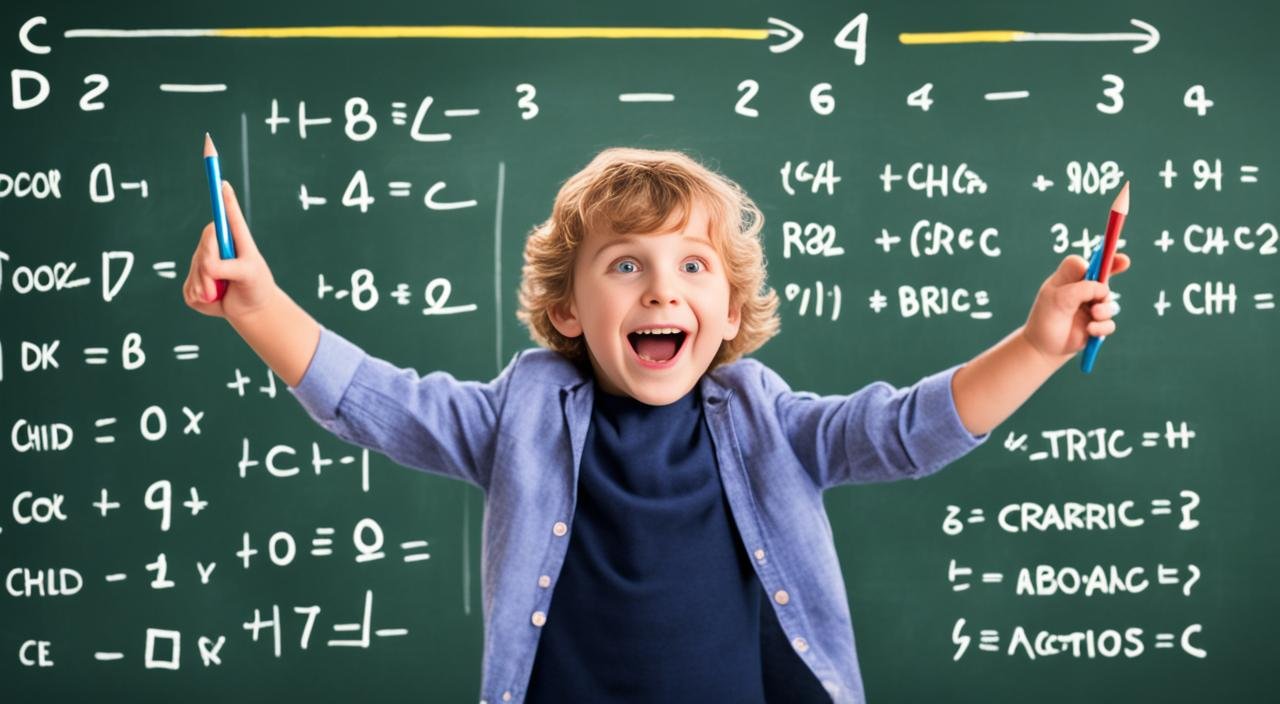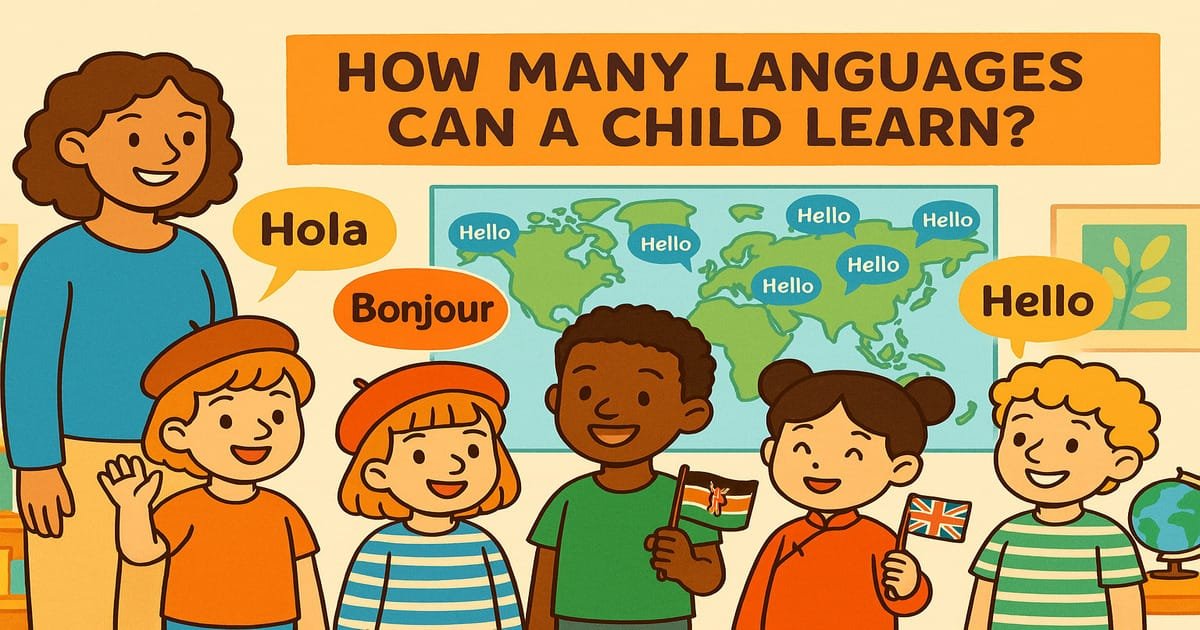Teaching algebra to children can be a challenging task, but with the right approach and strategies, it can be turned into a fun and engaging learning experience. In this article, we will explore effective methods and tips for teaching algebra to children, focusing on algebraic concepts that are suitable for their age and level of understanding. By breaking down complex concepts into simpler and more relatable ideas, we can help children develop a strong foundation in algebra from a young age.
Key Takeaways:
- Teaching algebra to children requires a patient and creative approach.
- Break down complex concepts into simpler and more relatable ideas for children
- Reinforce basic math skills before diving into algebraic concepts
- Engage children in hands-on activities to make learning algebra enjoyable
- Teach children the rules of algebra and the order of operations
Understanding the Basics: Numbers and Operations
Before diving into algebraic concepts, it is crucial for children to have a strong understanding of basic math operations. Addition, subtraction, multiplication, and division serve as the foundation for learning algebra. To ensure a successful algebra learning journey, it is essential for parents and educators to reinforce these fundamental skills before moving on to more complex topics.
Beginner algebra lessons for kids should focus on providing children with opportunities to practice these operations and ensuring they can solve basic math problems confidently. By mastering these core mathematical principles, children can develop the necessary skills and confidence to tackle algebraic concepts with ease.
“A solid understanding of basic math operations serves as a foundation for learning algebra.”
By mastering addition, subtraction, multiplication, and division, children can navigate the world of algebra with greater confidence and comprehension.
Parents can incorporate algebra teaching tips into daily activities to reinforce these fundamental skills. For example, while cooking or shopping, parents can encourage their children to calculate quantities or prices, providing practical applications for addition and multiplication. These real-life experiences help children understand the relevance of math in their daily lives and enhance their problem-solving abilities.
Furthermore, incorporating interactive online tools and educational games can make beginner algebra lessons for kids more enjoyable and engaging. These resources can provide a playful learning environment where children can explore and reinforce their knowledge of numbers and operations.
“Reinforcing basic math skills through interactive tools and practical applications can make algebra learning enjoyable for children.”
Benefits of Understanding Numbers and Operations
- Builds a strong foundation for learning algebraic concepts
- Enhances problem-solving abilities
- Provides practical skills for everyday life
- Fosters critical thinking and logical reasoning
By laying a solid groundwork in numbers and operations, children can approach algebra with confidence and enthusiasm. Understanding the basics sets the stage for a successful and rewarding algebraic journey, empowering children to excel in mathematics and beyond.
Introducing Algebraic Concepts: Patterns and Equations
One of the key aspects of teaching algebra to children is introducing them to algebraic concepts such as patterns and equations. By engaging children in activities that involve identifying and continuing patterns, they can develop an understanding of the underlying structures in algebra. Hands-on activities, such as using manipulatives or creating visual representations, can make learning algebra more engaging and enjoyable for children.
Children often respond well to interactive and creative approaches when learning algebra. Implementing fun and hands-on algebra activities can help make abstract concepts more concrete and relatable. These activities provide children with the opportunity to explore algebraic concepts in a meaningful way, fostering a deeper understanding of the subject.
Engaging Activities for Teaching Patterns
Exploring patterns is a fundamental part of understanding algebra. Here are some fun ways to teach algebraic patterns to children:
- Pattern Hunts: Ask children to identify patterns in their surroundings, such as patterns on clothes, tiles, or objects in the environment. Encourage them to explain the pattern’s structure and try to extend it.
- Pattern Books: Create pattern books with pictures and ask children to identify and continue the patterns. This activity enhances their pattern recognition skills and encourages critical thinking.
- Pattern Blocks: Provide children with pattern blocks and challenge them to create and extend patterns using different shapes and colors. This hands-on activity strengthens their spatial reasoning and geometric understanding.
Exploring Simple Equations
Introducing children to the concept of equations can help them apply algebra in real-world contexts. Here are some activities to make learning equations more interactive:
- Balancing Act: Use a balance scale and introduce simple equations like 2 + 3 = x. Ask children to find the value of x by adding weights to both sides of the scale until it balances.
- Function Machines: Create function machines using cardboard boxes or containers. Label the input and output sections and provide children with equations to solve. They can input numbers into the machine, follow the given operation, and determine the output.
- Equation Puzzles: Create equation puzzles where children need to rearrange numbers and symbols to solve the equation. This activity promotes logical thinking and problem-solving skills in an engaging way.
Incorporating interactive and hands-on activities into algebra lessons can make the learning process more enjoyable for children. By introducing patterns and equations in a fun and relatable way, children can develop a solid foundation in algebra while fostering their problem-solving and critical thinking skills.
| Activity | Description |
|---|---|
| Pattern Hunts | Children identify and extend patterns in their surroundings, promoting pattern recognition skills and creativity. |
| Pattern Books | Creating and continuing patterns using pictures in a book format, enhancing critical thinking and observation skills. |
| Pattern Blocks | Manipulating pattern blocks to create and extend patterns, developing spatial reasoning and geometric understanding. |
| Balancing Act | Using a balance scale to visually represent simple equations and find the unknown value, reinforcing the concept of equality. |
| Function Machines | Building function machines to solve equations, promoting logical thinking and understanding of input-output relationships. |
| Equation Puzzles | Solving equation puzzles by rearranging numbers and symbols, honing problem-solving and critical thinking skills. |
Rules of Algebra: Symmetry and Properties of Equality
In order for children to become proficient in solving algebraic equations, it is crucial for them to understand the rules of algebra. These rules provide a foundation for successfully navigating the complexities of algebra and solving equations with confidence. By teaching children these rules and providing ample practice, parents can support their child’s algebraic journey and help them excel in mathematics.
Symmetry: A Fundamental Rule
One of the key rules of algebra is symmetry. Simply put, if a = b, then b = a. This concept ensures that equations remain balanced and maintain equality. By applying the concept of symmetry, children can rearrange equations and solve for different variables, deepening their understanding of algebraic principles.
Commutative Property: Order Doesn’t Matter
Another important rule in algebra is the commutative property. This property states that the order of addition or multiplication does not affect the result. For example, a + b = b + a and a × b = b × a. By understanding this rule, children can rearrange terms within an equation without changing the final outcome, making complex algebraic expressions more manageable.
Properties of Equality: Balance on Both Sides
The properties of equality allow for various operations to be performed on both sides of an equation, preserving balance. Children should be taught that whatever operation is performed on one side of the equation must also be done to the other side. This rule ensures that both sides of the equation remain equal throughout the solving process.
“Teaching children the rules of algebra empowers them to solve equations with confidence and precision.”
Teaching Tips for Parents
When teaching children the rules of algebra, it is essential to provide them with a solid foundation and ample practice opportunities. Here are some tips for parents to consider:
- Break down complex concepts into simpler, relatable ideas to make algebra more accessible.
- Use real-life examples and relatable scenarios to demonstrate the application of algebraic rules.
- Encourage problem-solving and critical thinking by presenting children with algebraic equations to solve.
- Provide practice exercises and worksheets to reinforce the understanding of symmetry, the commutative property, and the properties of equality.
- Utilize interactive online resources and educational games to make learning algebra engaging and fun.
- Be patient and supportive, offering guidance and assistance as children navigate through algebraic concepts and equations.
By implementing these strategies, parents can foster a positive learning experience for their children and help them develop a strong foundation in algebra.
Properties of Algebra
| Rule | Description |
|---|---|
| Symmetry | If a = b, then b = a |
| Commutative Property | a + b = b + a |
| a × b = b × a | |
| Properties of Equality | Operations performed on one side must also be done to the other side. |
Understanding and applying the rules of algebra is crucial for children to confidently solve equations and excel in mathematics. By teaching these rules and providing support, parents can equip their children with the tools they need for algebraic success.
Order of Operations: Simplifying Algebraic Expressions

Understanding the order of operations is a fundamental skill in algebra. By following a specific sequence of operations, children can simplify algebraic expressions and arrive at accurate solutions. Introducing the acronym PEMDAS (Parentheses, Exponents, Multiplication, Division, Addition, Subtraction) can help children remember the correct order in which to perform these operations.
Teaching children the order of operations enables them to avoid common mistakes and confusion when solving algebraic equations. By emphasizing the importance of correctly sequencing operations, parents and educators can guide children towards improved accuracy and efficiency in their algebraic calculations.
Providing children with ample practice opportunities and real-life examples is vital for reinforcing their understanding of the order of operations. By using relatable situations, such as calculating the cost of multiple items or determining the sequence of actions in a problem, children can grasp the practical application of algebra and its relevance in everyday life.
The order of operations is a critical concept in algebra that paves the way for more complex problem-solving. By mastering this fundamental skill, children can build a strong foundation in algebra and develop the confidence to tackle more advanced mathematical concepts.
Solving Equations and Isolating Variables
One of the main goals in algebra is to solve equations and isolate variables. This is a fundamental skill that children need to master in order to progress in their algebraic understanding. By teaching them how to manipulate equations and perform operations to isolate the variable, parents and educators can help children develop a strong foundation in algebraic problem-solving.
One of the first steps in solving equations is combining like terms. This involves simplifying expressions by adding or subtracting similar terms on both sides of the equation. By demonstrating this process through step-by-step examples, children can grasp the concept of combining like terms and see how it applies to various equations.
Let’s take a look at an example:
Example 1:
Solve for x: 3x + 7 = 16
Step 1: Subtract 7 from both sides: 3x = 9
Step 2: Divide both sides by 3: x = 3
Solving equations also involves canceling out terms and using inverse operations. For instance, if the variable is multiplied by a certain number, the inverse operation would be division, and if it is added or subtracted, the inverse operation would be subtraction or addition respectively. By guiding children through similar examples and prompting them to identify the correct inverse operation, parents and educators can help children develop a deeper understanding of isolating variables.
Let’s take a look at another example:
Example 2:
Solve for x: 2x – 5 = 7
Step 1: Add 5 to both sides: 2x = 12
Step 2: Divide both sides by 2: x = 6
Tips for Teaching Solving Equations and Isolating Variables
Here are some tips for parents and educators to effectively teach children how to solve equations and isolate variables:
- Break down each step: Break down the process of solving equations into manageable steps, making it easier for children to grasp each concept.
- Provide ample practice: Offer a variety of practice problems for children to solve, ensuring they have enough opportunities to apply their knowledge and build confidence.
- Use real-life examples: Relate algebraic equations to real-life situations to help children see the practical applications of their learning.
- Encourage problem-solving strategies: Teach children problem-solving strategies, such as looking for patterns or identifying similar equations, to help them approach new and unfamiliar problems.
With these teaching tips and strategies, parents and educators can empower children to become proficient in solving equations, enabling them to tackle more complex algebraic concepts with confidence.
Conclusion
Teaching algebra to children requires a patient and creative approach. By breaking down complex concepts, reinforcing basic math skills, and providing opportunities for hands-on learning, parents and educators can make algebra more accessible and engaging for children.
Additionally, teaching children the rules of algebra, the order of operations, and problem-solving strategies can help them develop a strong foundation in algebra and prepare them for more advanced math concepts in the future.
With the right guidance and support, children can develop a love for algebra and gain valuable problem-solving skills that will benefit them throughout their academic journey.
FAQ
How can I teach my child algebra?
Teaching algebra to children can be made easier by breaking down complex concepts into simpler and more relatable ideas. Providing hands-on activities and real-life examples can make learning algebra more engaging and enjoyable for children.
What are some beginner algebra lessons for kids?
Before diving into algebra, it is important for children to have a solid understanding of basic math operations such as addition, subtraction, multiplication, and division. Reinforcing these skills is crucial in laying a strong foundation for algebra learning.
How can I introduce algebraic concepts to my child?
Introducing concepts such as patterns and equations can help children develop an understanding of the underlying structures in algebra. Engaging children in activities that involve identifying and continuing patterns, as well as using manipulatives and visual representations, can make learning algebra more enjoyable for them.
What rules of algebra should I teach my child?
It is important for children to understand the rules of algebra, such as symmetry, commutative property, and properties of equality. These rules allow children to solve algebraic equations and perform operations on both sides of an equation.
What is the order of operations in algebra?
The order of operations in algebra is crucial in simplifying algebraic expressions. Children need to learn the sequence of operations (PEMDAS) – Parentheses, Exponents, Multiplication, Division, Addition, Subtraction – and apply it when solving equations.
How can my child solve equations and isolate variables?
Solving equations and isolating variables require children to manipulate equations and perform operations on both sides. By teaching them techniques such as combining like terms, canceling out terms, and using inverse operations, parents and educators can help children become more confident in solving algebraic equations.
What are the benefits of teaching algebra to children?
Teaching algebra to children not only helps them develop problem-solving skills, but it also prepares them for more advanced math concepts in the future. It can enhance critical thinking, logical reasoning, and analytical skills, which are valuable in various academic and real-life situations.





